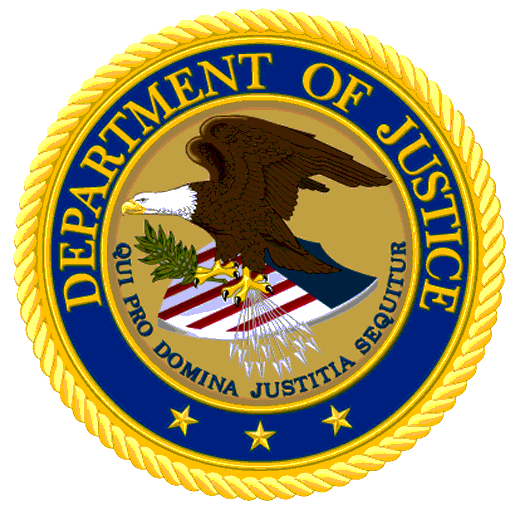
 |
Computer Crime and |
Computer Crime Policy and Programs
 Go to . . . CCIPS home page || Justice Department home page
Go to . . . CCIPS home page || Justice Department home page
- The National Infrastructure Protection Center Advisory
- The National Information Infrastructure Protection Act of 1996
- Distributed Denial of Service Attacks
- The Melissa Virus
- Cybercrime Summit: A Law Enforcement/Information Technology Industry Dialogue
- The Computer Hacking and Intellectual Property (CHIP) Units
A. The National Infrastructure Protection Center AdvisoryOn March 8, 2001, the National Infrastructure Protection Center (NIPC) issued the NIPC Advisory 01-003, an update to the NIPC Advisory 00-060, "E-Commerce Vulnerabilities," dated December 1, 2000. Below are links to the advisory and press release.
B. The National Information Infrastructure Protection Act of 1996In October 1996, the National Information Infrastructure Protection Act of 1996 was enacted as part of Public Law 104-294. It amended the Computer Fraud and Abuse Act, which is codified at 18 U.S.C. § 1030. Below you will find links to the amended version of 18 U.S.C. § 1030, as well as a legislative analysis, prepared by attorneys from the Computer Crime and Intellectual Property Section. This legislative analysis was incorporated into the Senate Committee on the Judiciary’s Report on the National Information Infrastructure Protection Act. The Senate Report is also linked below.
C. Distributed Denial of Service AttacksIn the week of February 7, 2000, hackers launched distributed denial of service (DDS) attacks on several prominent websites, including Yahoo!, E*Trade, Amazon.com, and eBay. In a DDS attack, dozens or even hundreds of computers all linked to the Internet are instructed by a rogue program to bombard the target site with nonsense data. This bombardment soon causes the target sites’s servers to run out of memory, and thus cause it to be unresponsive to the queries of legitimate customers. On February 29, 2000, Deputy Attorney General Eric Holder and Director of the National Infrastructure Protection Center Michael A. Vatis testified before a House and Senate Joint Judiciary Subcommittee meeting to talk about the distributed denial of services attacks and about cybercrime in general.
- Statement of Eric Holder, Deputy Attorney General of the United States, Before the Subcommittee on Crime of the House Committee on the Judiciary and the Subcommittee on Criminal Justice Oversight of the Senate Committee on the Judiciary on "Internet Denial of Service Attacks and the Federal Response" (February 29, 2000)
- Statement of Michael A. Vatis, Director, National Infrastructure Protection Center, Federal Bureau of Investigation before the Senate Judiciary Committee, Criminal Justice Oversight Subcommittee and House Judiciary Committee, Crime Subcommittee on "Cybercrime" (February 29, 2000)
D. The Melissa VirusThe Melissa virus first appeared on the Internet in March of 1999. It spread rapidly throughout computer systems in the United States and Europe. It is estimated that the virus caused $80 million in damages to computers worldwide. In the United States alone, the virus made its way through 1.2 million computers in one-fifth of the country’s largest businesses. David Smith pleaded guilty on December 9, 1999 to state and federal charges associated with his creation of the Melissa virus.Three documents relating to the Melissa Virus case are linked below:
- Information in United States of America v. David Smith -- Court document filed by the U.S. Attorney's Office in Newark, New Jersey relating to charges against the creator of the Melissa computer virus.
- Plea Agreement -- David Smith agreed to plead guilty to creating and disseminating the Melissa virus and causing over $80 million in damages, in violation of federal computer crime laws.
- Creator of ‘Melissa’ Computer Virus Pleads Guilty in New Jersey to State and Federal Charges (December 9, 1999)
E. Cybercrime Summit: A Law Enforcement/Information Technology Industry DialogueOn April 5, 2000, the Department of Justice hosted a Cybercrime Summit at Stanford Law School, titled "Cybercrime Summit:A Law Enforcement/Information Technology Industry Dialogue on Prevention, Detection, Investigation and Cooperation," at which Attorney General Janet Reno and members of the Justice Department and other law enforcement agencies met with representatives of information technology and Internet companies. The main topic of the Summit was how to improve cooperation between law enforcement and industry in investigating computer network hacking. Linked below are the Attorney General’s Opening Remarks from the Summit, as well as the Question & Answer session between industry representatives and the Attorney General.
F. The Computer Hacking and Intellectual Property (CHIP) UnitsAs announced by Attorney General John Ashcroft on July 20, 2001, nine additional units are being added to a program called CHIP (Computer Hacking and Intellectual Property) that has proven successful in Northern California. That project demonstrated the benefits of a unit of prosecutors working closely with the FBI and other agencies to establish a relationship with the local high tech community and encourage them to refer cases to law enforcement. The new CHIP units are the next phase in the Department's ongoing efforts to combat cybercrime and Intellectual Property theft. In 1991, the Department created what is now the Computer Crime and Intellectual Property Section (CCIPS) in the Criminal Division. The CHIP team members will complement the highly trained network of prosecutors at CCIPS and the US Attorneys’ Offices. More information on the CHIP units is accessible via the links below:
Updated page July 31, 2003 usdoj-crm/mis/krr